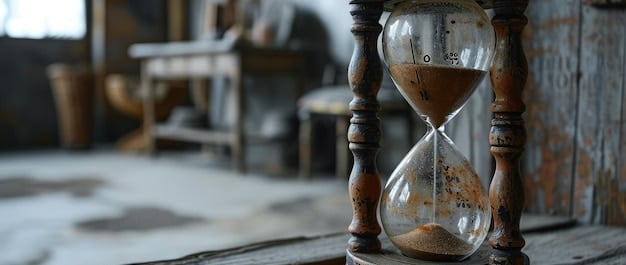The Hourglass ⏳ Medieval Timekeeping
Stories About Time: Measuring Moments Through History ⏳🌞🌕 from the chapter "Towards an Understanding of Linear Time" from the History Album. In this chapter we invite children to a journey through the fascinating evolution of timekeeping. Starting with observing the Sun🌞, and people who first noticed the movement of shadows to mark the day, to the people who noticed the phrases of the Moon 🌙, and tracked the lunar cycle to create months, these stories uncover humanity’s inventive ways of measuring moments.Children will marvel at ancient innovations, like sundials and lunar calendars, and explore cultural contributions, such as candle clocks 🕯️ and water clocks 🌊, that paved the way for modern timekeeping. Each story weaves history, science, and culture, showing how humans connected with the natural world to organize their lives. 🌿✨Through these narratives, children will see time not just as a number on a clock, or passing month on the callendar, but as a rich legacy of human curiosity and creativity. With hands-on activities like building sundials and journaling moon phases, they’ll become modern-day timekeepers, inspired to ask, “How did people measure time before clocks?” and “What can I discover about time?”This vivid exploration links the past to the present, sparking imagination and a deeper appreciation for the ingenuity of those who came before us. 🌍✨
HISTORY STORIES
12/13/20243 min read


Do you remember Su Sung’s incredible astronomical water clock? 🌊🏯 Over 1,000 years ago in ancient China, Su Sung built a clock so extraordinary that it didn’t just tell time—it revealed the movements of the stars and planets 🌌. But what if you needed a timekeeper that was portable and reliable—something you could take with you on long journeys?
The answer was hidden in the sand! 🌟 And this is how the hourglass was invented—a clever device that could measure time anywhere. ⏳ ( show hourglass )
The hourglass ⏳ emerged in 700 years ago at 14th century CE, during a time when people needed more practical tools to measure time. Imagine sailors embarking on voyages across vast oceans 🌊, monks keeping their prayer routines in monasteries 🏰, or traders traveling great distances. They all needed a timekeeper that wouldn’t spill, freeze, or rely on sunlight. Someone had a brilliant idea: “What if we could measure time using something that flows like water, but doesn’t spill?”
An hourglass is made of two glass bulbs connected by a tiny neck. Inside, fine sand flows smoothly from the top bulb to the bottom, one grain at a time. The neck is so small that the sand moves steadily, always at the same speed. To keep the hourglass safe and sturdy, it was often attached to a wooden 🪵 or metal frame ⚙️. This frame not only protected the delicate glass from breaking but also ensured the hourglass stayed steady, even on rocky ships 🚢 or uneven surfaces.( point the neck connecting the glass bulbs , discuss the frame )
People marked the bulbs with lines to show how much time had passed as the sand fell. Some hourglasses measured just a few minutes, while others could measure an entire hour! And when all the fine sand had fallen to the bottom, you simply flipped the hourglass over to start it again.
The hourglass wasn’t just any tool—it was like a little magic sand timer ⏳ that could go wherever you needed! It was portable and reliable making it perfect for travelers, sailors, and even monks. Unlike water clocks 🌊, it wouldn’t spill or freeze, and unlike sundials 🌞, it didn’t need the sun to work. The hourglass could measure the time day or night, no matter the weather!
On Ships 🚢: Imagine sailors crossing the vast oceans 🌊. They’d flip the hourglass every 30 minutes, the sand trickling down as steady as the waves. It was like their own little clock for keeping time on long, adventurous journeys! In Monasteries 🏰: Picture a quiet monastery where monks were making books. The monks, in their robes, used hourglasses to measure the minutes for prayers, or book making. In Homes 🏠: Or in a cozy home, where someone uses an hourglass to time their baking 🍪, to play games 🎲, or even to see who could finish their work the fastest!
The hourglass wasn’t just a tool—it became a universal timekeeper, spread all over the world, it was helping people organize their lives in ways they never imagined. Wherever it went, it carried with it the mystery and magic of falling sand, making time feel like an adventure! 🌟⏳
The accuracy of the hourglass depended on the quality of the sand and the size of the neck, and flipping it wasn’t always precise. People began to wonder: How could we create a timekeeper that didn’t need flipping and could be heard by an entire town?
But this is a story for another day… 🛎️✨
This story is part of the following Clock Stories Series which can be turned into Drama Play or Storybook Compilation.
Ancient Timekeeping
🌞 The Sun Watchers ~3500 BCE
🌊 The Water Clock Wonders ~1500 BCE
🏛️ The Tower of the Winds ~50 BCE
Medieval Timekeeping
🕯️ The Candle Clock ~980 CE
🌌 Su Sung’s Astronomical Water Clock ~1092 CE
⏳ The Hourglass Sand Masters ~14th Century
🛎️ The Mechanical Church Bells Chime ~14th Century
Science in Timekeeping
🌟 Astronomical Marvel: The Prague Clock ~1410 CE
🌍 Galileo’s Pendulum Discovery ~1602 CE
Modern Timekeeping
With Montessori joy,
Vanina 😊

